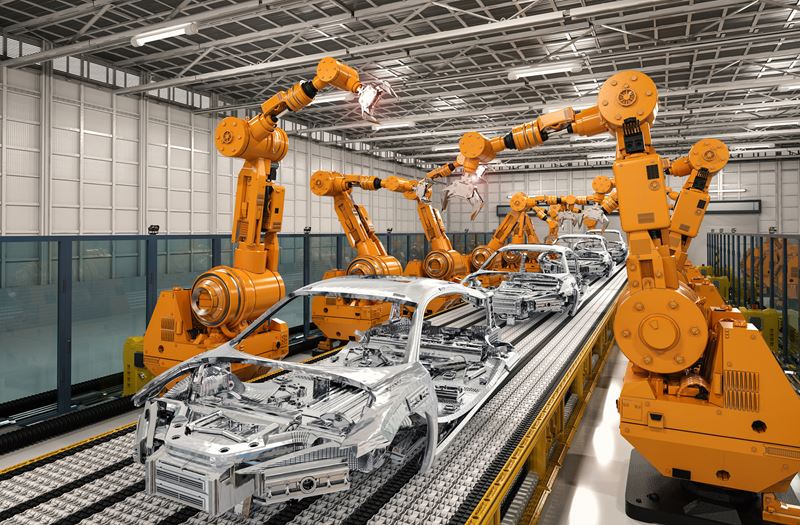The impact of the skilled labour shortage
The impact of the skilled labour shortage
“Help Wanted” is a common phrase in trades industries today, as Canada and other markets face a growing skilled labour crunch. The manufacturing, construction and transportation industries in particular are struggling to find qualified employees—a problem that can close the door to new growth and leave employers open to more risk.
Just how big is the skilled labour problem? A recent report by Canadian Manufacturers & Exporters (CME) found that 85% of manufacturers have difficulty recruiting and filling job vacancies.1 The most pressing need is skilled production workers and general labour, followed by management, engineers and production support.
On the construction side, the trend is also intensifying. According to BuildForce Canada, employment in Canada’s construction and maintenance industry is expected to grow by 50,200 workers by 2029.2 With the anticipated retirement of more than 257,000 construction workers over the same period, the industry will need to recruit more than 307,000 workers to keep pace with demand.
Canada is not alone in facing an unprecedented labour shortage. In the United States, for example, 4.6 million jobs will need to be filled in the manufacturing sector over the next decade, and 2.4 million jobs may be left open due to a lack of trained workers, according to a 2018 report by The Manufacturing Institute and Deloitte.3
One significant reason for the skilled-labour shortage is the increase of technology in traditional industries. Machinery and equipment is far more technologically advanced today, and retraining an aging demographic of existing skilled trades employees has not kept pace. On top of that, it’s an ongoing challenge to attract younger demographics to the trades, which typically aren’t seen as attractive career choices.
While job vacancies may be good news for candidates in the field, the labour shortage can have far-reaching, negative impacts on businesses. In turn, these issues can affect the insurance sector in the way of more insurance claims, which can result in increased insurance premiums and possibly reduced or restricted insurance coverage.
Don Maxwell, Manager, Business Operations, Strategy and Planning at Sovereign Insurance explains key impacts the labour shortage can have on businesses:
- Lack of skilled labour can slow a company’s growth. In the CME survey, the top three impacts of skills shortages identified by manufacturers are: they’re forced to hire ill-suited candidates, there are foregone production opportunities, and there’s less business investment and product development—all of which impede manufacturers’ ability to compete.
- Slow growth, in turn, may lead to a company taking shortcuts elsewhere in their operations to save money and increase profits. This can take the form of less stringent maintenance or quality-control practices, which could lead to losses.
For example, machine breakdowns due to poor maintenance schedules can result in expensive repairs and investment loss, which may not be insurable and consequently represent an out of pocket expense for the company.
Also, a lapse in proper quality control could result in expensive product liability suits – ultimately increasing insurance claims, and resultant premiums. In some cases, it may even result in a loss of coverage.
- Quality of work can be affected if employees don’t have the right skills. That can increase the cost of having to redo faulty workmanship or having to pay for damages to third parties as a result of negligence on behalf of a poorly trained or skilled employee.
Apart from the trades, the transportation industry has also been struggling with a lack of properly trained and experienced drivers. This often results in companies hiring people with little or no experience to drive tractor trailers, which can have tragic consequences. Part of the issue is a lack of consistent trucking standards and regulations across Canada. Currently, mandatory training for transport truck drivers is only required in Ontario.4
There is no easy solution to tackling the skilled labour shortage: it will take a combination of training, education and changing negative perceptions about the trades. The good news is much is already being done on this front, with involvement from government and schools. For example, The Government of Ontario recently launched a marketing campaign to attract more people to the skilled trades and to encourage employers to hire more apprentices.5 The government is also investing $75 million in programs to expose high-school students to the trades.
On the education front, for example, Durham College in Whitby, Ont. is one post-secondary institution that’s helping to close the skills gap. The college is expanding its Skills Training Centre to offer more opportunities for students to learn the next-generation trades skills. The $35-million expansion, scheduled to open in summer 2021, will feature a new 60,000 sq. ft. centre that will double the college’s industrial skilled trades training capacity.
For industry’s part, companies can fill their future talent pool by partnering with local colleges and universities. Co-ops and internships give students a head start in their careers, while giving companies the opportunity to develop and hire potential candidates before their competitors.
With a retiring workforce and dearth of new talent pools, the time for companies to take action is now. Those that do will find and retain qualified employees who produce quality work, which in turn will help mitigate risk and open the door for future success.
Sources:
1Canadian Manufacturers & Exporters (CME): “We’re Hiring: Manufacturing Workforce Survey Report” 2019
2BuildForce Canada: “Construction and Maintenance Looking Forward”
3Manufacturing Institute and Deloitte: “2018 Skills Gap in Manufacturing Study”
4Global News: “Only Ontario requires truck driver training, but Humboldt crash could change that”, April 13, 2018
5Government of Ontario: “Ontario takes action to address skilled trades shortage,” Jan. 10, 2020


